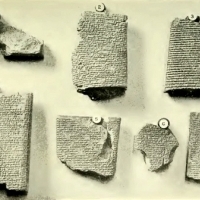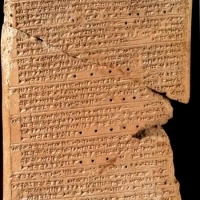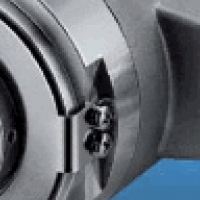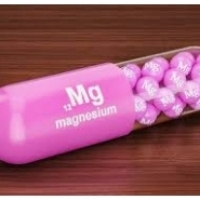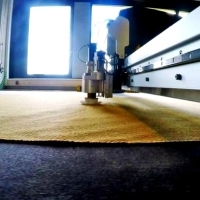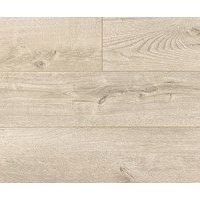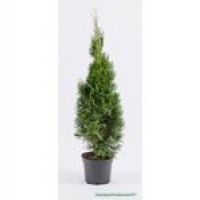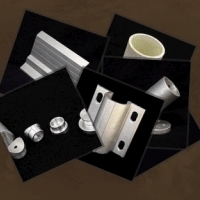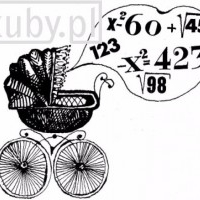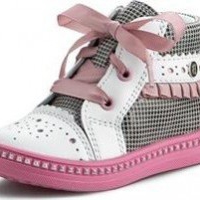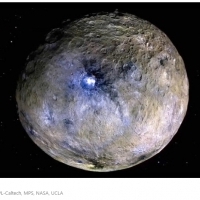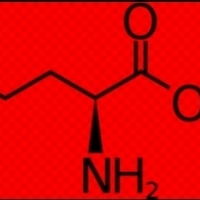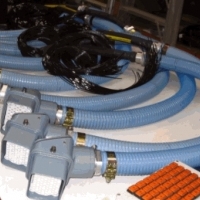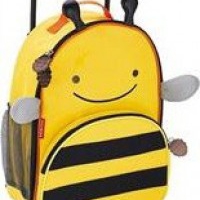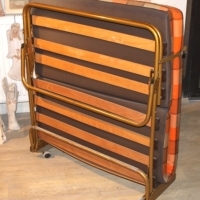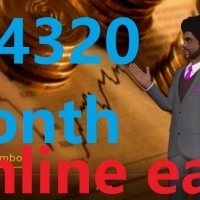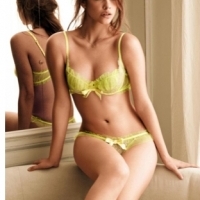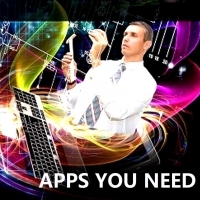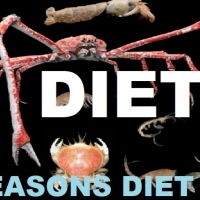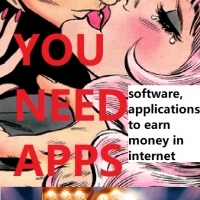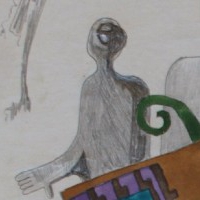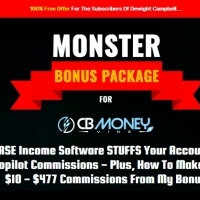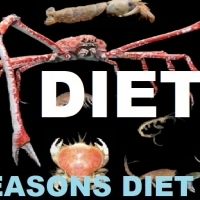0 : Odsłon:
druga część:
1750 BCE: Elamite invasion and Amorite migration ends the Sumerian civilization.
Cuneiform tablet with the Sumerian tale of The Deluge, dated to circa 1740 BCE, from the ruins of Nippur. From the permanent collection of the University of Pennsylvania Museum of Archeology and Anthropology, Philadelphia. Text and photo © The Metropolitan Museum of Art. Wszelkie prawa zastrzeżone.
Cuneiform tablet with the Sumerian tale of The Deluge, dated to circa 1740 BCE, from the ruins of Nippur.
From the permanent collection of the University of Pennsylvania Museum of Archeology and Anthropology, Philadelphia.
Text and photo © The Metropolitan Museum of Art. Wszelkie prawa zastrzeżone.
1600 BCE – 1155 BCE: Kassite Period.
1595 BCE: King Agum-kakrime, aka Agum II, Kassite Kingdom.
1350 BCE – 1050 BCE: Middle Assyrian Period.
A gypsum memorial slab from the Middle Assyrian Period (1300 - 1275 BCE) , findspot Kalah Shergat, Aššur. The inscription records the name, titles and conquests of King Adad-Nirari, his father Arik-den-ili, his grandfather Enlil-nirari, and his great-grandfather Ashur-uballit I. Memorializing the restoration of the Temple of Aššur in the city of Aššur, the text invokes curses upon the head of any king or other person who alters or defaces the monument. The artifact was purchased from the French Consul in Mosul in 1874 for £70, the British Museum notes reference Mr. George Smith and The Daily Telegraph with an acquisition date of 1874. Bezold, Carl, Catalogue of the Cuneiform Tablets in the Kouyunjik Collection of the British Museum, IV, London, BMP, 1896. Furlani, G, Il Sacrificio Nella Religione dei Semiti di Babilonia e Assiria, Rome, 1932. Rawlinson, Henry C; Smith, George, The Cuneiform Inscriptions of Western Asia, IV, London, 1861. Budge, E A W, A Guide to the Babylonian and Assyrian Antiquities., London, 1922. Budge, E A W, The Rise and Progress of Assyriology, London, Martin Hopkinson & Co, 1925. Grayson, Albert Kirk, Assyrian Rulers of the Third and Second Millennia BC (to 1115 BC) , 1, Toronto, University of Toronto Press, 1987. http: //www.britishmuseum.org/research/collection_online/collection_object_details.aspx?assetId=32639001&objectId=283138&partId=1
A gypsum memorial slab from the Middle Assyrian Period (1300 – 1275 BCE) , findspot Kalah Shergat, Aššur.
The inscription records the name, titles and conquests of King Adad-Nirari, his father Arik-den-ili, his grandfather Enlil-nirari, and his great-grandfather Ashur-uballit I.
Memorializing the restoration of the Temple of Aššur in the city of Aššur, the text invokes curses upon the head of any king or other person who alters or defaces the monument.
The artifact was purchased from the French Consul in Mosul in 1874 for £70, the British Museum notes reference Mr. George Smith and The Daily Telegraph with an acquisition date of 1874.
Bezold, Carl, Catalogue of the Cuneiform Tablets in the Kouyunjik Collection of the British Museum, IV, London, BMP, 1896.
Furlani, G, Il Sacrificio Nella Religione dei Semiti di Babilonia e Assiria, Rome, 1932.
Rawlinson, Henry C; Smith, George, The Cuneiform Inscriptions of Western Asia, IV, London, 1861.
Budge, E A W, A Guide to the Babylonian and Assyrian Antiquities., London, 1922.
Budge, E A W, The Rise and Progress of Assyriology, London, Martin Hopkinson & Co, 1925.
Grayson, Albert Kirk, Assyrian Rulers of the Third and Second Millennia BC (to 1115 BC) , 1, Toronto, University of Toronto Press, 1987.
http: //www.britishmuseum.org/research/collection_online/collection_object_details.aspx?assetId=32639001&objectId=283138&partId=1
1330 BCE – 1295 BCE: Reign of King Muršili II (Hittite Kingdom) .
1126 BCE – 1104 BCE: Reign of King Nebuchadnezzar I (Old Babylonian Period) .
1120 BCE: The Sumerian Enuma Elish (creation story) is written.
Enuma Elish means “when above”, the two first words of the epic. This Babylonian creation story was discovered among the 26,000 clay tablets found by Austen Henry Layard in the 1840's at the ruins of Nineveh. Enuma Elish was made known to the public in 1875 by the Assyriologist George Adam Smith (1840-76) of the British Museum, who was also the discoverer of the Babylonian Epic of Gilgamesh. He made several of his findings on excavations in Nineveh. http: //www.creationmyths.org/enumaelish-babylonian-creation/enumaelish-babylonian-creation-3.htm
Enuma Elish means “when above”, the two first words of the epic.
This Babylonian creation story was discovered among the 26,000 clay tablets found by Austen Henry Layard in the 1840’s at the ruins of Nineveh.
Enuma Elish was made known to the public in 1875 by the Assyriologist George Adam Smith (1840-76) of the British Museum, who was also the discoverer of the Babylonian Epic of Gilgamesh. He made several of his findings on excavations in Nineveh.
http: //www.creationmyths.org/enumaelish-babylonian-creation/enumaelish-babylonian-creation-3.htm
930 BCE – 612 BCE: Neo-Assyrian Period.
884 BCE – 859 BCE: Reign of King Ashurnasirpal II.
860 BCE – 850 BCE: Reign of King Nabû-apla-iddina (Babylonian Period) .
858 BCE – 824 BCE: Reign of King Shalmaneser III.
854 BCE – 819 BCE: Reign of King Marduk-zākir-šumi (Babylonian Period) .
823 BCE – 811 BCE: Reign of King Shamsi-Adad V.
810 BCE – 783 BCE: Reign of King Adad-nirari III.
782 BCE – 773 BCE: Reign of King Shalmaneser IV.
772 BCE – 755 BCE: Reign of King Assur-dan III.
Venus Tablet Of Ammisaduqa, 7th Century The Venus Tablet of Ammisaduqa (Enuma Anu Enlil Tablet 63) refers to a record of astronomical observations of Venus, as preserved in numerous cuneiform tablets dating from the first millennium BC. This astronomical record was first compiled during the reign of King Ammisaduqa (or Ammizaduga) , with the text dated to the mid-seventh century BCE. The tablet recorded the rise times of Venus and its first and last visibility on the horizon before or after sunrise and sunset in the form of lunar dates. Recorded for a period of 21 years, this Venus tablet is part of Enuma anu enlil ("In the days of Anu and Enlil") , a long text dealing with Babylonian astrology, which mostly consists of omens interpreting celestial phenomena. http: //fineartamerica.com/featured/2-venus-tablet-of-ammisaduqa-7th-century-science-source.html
Venus Tablet Of Ammisaduqa, 7th Century
The Venus Tablet of Ammisaduqa (Enuma Anu Enlil Tablet 63) refers to a record of astronomical observations of Venus, as preserved in numerous cuneiform tablets dating from the first millennium BC. This astronomical record was first compiled during the reign of King Ammisaduqa (or Ammizaduga) , with the text dated to the mid-seventh century BCE.
The tablet recorded the rise times of Venus and its first and last visibility on the horizon before or after sunrise and sunset in the form of lunar dates. Recorded for a period of 21 years, this Venus tablet is part of Enuma anu enlil (“In the days of Anu and Enlil”) , a long text dealing with Babylonian astrology, which mostly consists of omens interpreting celestial phenomena.
http: //fineartamerica.com/featured/2-venus-tablet-of-ammisaduqa-7th-century-science-source.html
754 BCE – 745 BCE: Reign of King Assur-nirari V.
744 BCE – 727 BCE: Reign of King Tiglath-Pileser III.
726 BCE – 722 BCE: Reign of King Shalmaneser V.
721 BCE – 705 BCE: Reign of King Sargon II.
704 BCE – 681 BCE: Reign of King Sennacherib.
This stone water basin in the collection of the Vorderasiatisches Museum, Berlin came from the forecourt of the Temple of Aššur at Assur. The sides are inscribed with images of Enki / Ea, the Mesopotamian god of wisdom and exorcism, and puradu-fish apkallu. The textual references on the basin refer to the Assyrian king Sennacherib. The Temple of Aššur was known as the Ešarra, or Temple of the Universe. The Corpus of Mesopotamian Anti-Witchcraft Rituals online notes that water was rendered sacred for ritual purposes by leaving it exposed outside overnight, open to the stars and the purifying powers of the astral deities. The subterranean ocean, or apsû, was the abode of Enki / Ea, and the source of incantations, purification rites and demons, disease, and witchcraft. Adapted from text © by Daniel Schemer 2014, (CC BY-NC-ND license) . http: //www.cmawro.altorientalistik.uni-wuerzburg.de/magic_witchcraft/gods_stars/ https: //books.google.co.th/books?id=LSaeT9CloGIC& pg=PA19& lpg=PA19& dq=water+basin+assur+temple+assur+vorderasiatisches+Museum+Berlin& source=bl& ots=9fw1d16kjb& sig=4ufIF4Ev9MiZl1QUQ8Rv3QU_BZU& hl=en& sa=X& ved=0CB8Q6AEwAGoVChMIysSB25rYyAIVUFmOCh1G7QKS#v=onepage& q& f=false
This stone water basin in the collection of the Vorderasiatisches Museum, Berlin came from the forecourt of the Temple of Aššur at Assur. The sides are inscribed with images of Enki / Ea, the Mesopotamian god of wisdom and exorcism, and puradu-fish apkallu. The textual references on the basin refer to the Assyrian king Sennacherib.
The Temple of Aššur was known as the Ešarra, or Temple of the Universe.
The Corpus of Mesopotamian Anti-Witchcraft Rituals online notes that water was rendered sacred for ritual purposes by leaving it exposed outside overnight, open to the stars and the purifying powers of the astral deities. The subterranean ocean, or apsû, was the abode of Enki / Ea, and the source of incantations, purification rites and demons, disease, and witchcraft.
Adapted from text © by Daniel Schwemer 2014, (CC BY-NC-ND license) .
http: //www.cmawro.altorientalistik.uni-wuerzburg.de/magic_witchcraft/gods_stars/
https: //books.google.co.th/books?id=LSaeT9CloGIC&pg=PA19&lpg=PA19&dq=water+basin+assur+temple+assur+vorderasiatisches+Museum+Berlin&source=bl&ots=9fw1d16kjb&sig=4ufIF4Ev9MiZl1QUQ8Rv3QU_BZU&hl=en&sa=X&ved=0CB8Q6AEwAGoVChMIysSB25rYyAIVUFmOCh1G7QKS#v=onepage&q&f=false
680 BCE – 669 BCE: Reign of King Esarhaddon.
668 BCE – 627 BCE: Reign of King Ashurbanipal.
626 BCE – 539 BCE: Neo-Babylonian Period.
625 BCE – 605 BCE: Reign of King Nabopolassar.
604 BCE – 562 BCE: Reign of King Nebuchadnezzar II.
Astronomical Diary VAT 4956 in the collection of the Berlin Museum sets the precise date of the destruction of Jerusalem. This tablet details the positions of the moon and planets during the year 37 of the reign of Nebuchadnezzar, king of Babylon, which was 567 BCE. Jerusalem was destroyed in 586 BCE. http: //www.lavia.org/english/archivo/vat4956en.htm
Astronomical Diary VAT 4956 in the collection of the Berlin Museum sets the precise date of the destruction of Jerusalem.
This tablet details the positions of the moon and planets during the year 37 of the reign of Nebuchadnezzar, king of Babylon, which was 567 BCE. Jerusalem was destroyed in 586 BCE.
http: //www.lavia.org/english/archivo/vat4956en.htm
561 BCE – 560 BCE: Reign of King Evil-Merodach.
559 BCE – 556 BCE: Reign of King Neriglissar.
556 BCE: Reign of King Labashi-Marduk.
555 BCE – 539 BCE: Reign of King Nabonidus.
550 BCE – 331 BCE: Achaemenid (Early Persian) Period.
538 BCE – 530 BCE: Reign of King Cyrus II.
529 BCE – 522 BCE: Reign of King Cambyses II.
522 BCE: Reign of King Bardiya.
522 BCE: Reign of King Nebuchadrezzar III.
521 BCE: Reign of King Nebuchadrezzar IV.
521 BCE – 486 BCE: Reign of King Darius I.
485 BCE – 465 BCE: Reign of King Xerxes I.
482 BCE: Reign of King Bel-shimanni.
482 BCE: Reign of King Shamash-eriba.
464 BCE – 424 BCE: Reign of King Artaxerxes.
424 BCE: Reign of King Xerxes II.
423 BCE – 405 BCE: Reign of King Darius II.
404 BCE – 359 BCE: Reign of King Artaxerxes II Memnon.
358 BCE – 338 BCE: Reign of King Artaxerxes III Ochus.
337 BCE – 336 BCE: Reign of King Arses.
336 BCE – 323 BCE: Reign of Alexander the Great (Greek Period, below) .
335 BCE – 331 BCE: Reign of King Darius III.
323 BCE – 63 BCE: Seleucid (Hellenistic) Period.
333 BCE – 312 BCE: Macedonian Dynasty.
281 BCE – 261 BCE: Reign of Antiochus I.
Antiochus Cylinder BM36277
The Cylinder of Antiochus I Soter from the Ezida Temple in Borsippa (Antiochus Cylinder) is an historiographical text from ancient Babylonia, dated 268 BCE, that recounts the Seleucid crown prince Antiochus, the son of king Seleucus Nicator, rebuilding the Ezida Temple.
Lenzi: “The opening lines read: “I am Antiochus, great king, strong king, king of the inhabited world, king of Babylon, king of the lands, the provider of Esagil and Ezida, foremost son of Seleucus, the king, the Macedonian, king of Babylon.”
https: //therealsamizdat.com/category/alan-lenzi/
The cuneiform text itself (BM 36277) is now in the British Museum. The document is a barrel-shaped clay cylinder, which was buried in the foundations of the Ezida temple in Borsippa.
The script of this cylinder is inscribed in archaic ceremonial Babylonian cuneiform script that was also used in the well-known Codex of Hammurabi and adopted in a number of royal inscriptions of Neo-Babylonian kings, including. Nabopolassar, Nebuchadnezzar and Nabonidus (cf. Berger 1973).
The script is quite different from the cuneiform script that was used for chronicles, diaries, rituals, scientific and administrative texts.
(Another late example is the Cyrus Cylinder, commemorating Cyrus’ capture of Babylon in 539 BCE (Schaudig 2001: 550-6) . This cylinder, however, was written in normal Neo-Babylonian script.)
The Antiochus Cylinder was found by Hormuzd Rassam in 1880 in Ezida, the temple of the god Nabu in Borsippa, in what must have been its original position, “encased in some kiln-burnt bricks covered over with bitumen” in the “doorway” of Koldewey’s Room A1: probably this was built into the eastern section of the wall between A1 and Court A, since the men of Daud Thoma, the chief foreman, seem to have destroyed much of the brickwork at this point.
Rassam (1897: 270) mistakenly records this as a cylinder of Nebuchadnezzar II (Reade 1986: 109) . The cylinder is now in the British Museum in London. (BM 36277) .
http: //www.livius.org/cg-cm/chronicles/antiochus_cylinder/antiochus_cylinder1.html
This timeline is modified from an original on the ancient.eu site. I added links and illustrations, and tagged and categorized timeframes, which should bring up useful search results when surfing among the tags and categories at the bottom of the page.
I also integrated chronological periods and a selected list of kings from Constance Ellen Gane’s Composite Beings in Neo-Babylonian Art, 2012, p. xxii – xxiii, and de-conflicted the entry for the Ur III Period, aka The Sumerian Renaissance, which Gane dates with more precision than the original.
poprzednia część: > Timeline: Sumer.
: Wyślij Wiadomość.
Przetłumacz ten tekst na 91 języków
: Podobne ogłoszenia.
ASTAT. Firma. Maszyny, urządzenia przemysłowe.
Firma Astat istnieje już od 1992 roku. Przez ten czas udało się nam zasłużyć na zaufanie klientów oraz zyskać opinię solidnego i przewidywalnego partnera, potrafiącego sprawnie dostosowywać się do ciągle rosnących wymagań polskiego rynku. Od dnia…
Funkcie horčíka v bunkových biochemických procesoch:
Funkcie horčíka v bunkových biochemických procesoch: Hlavnou úlohou horčíka v bunke je aktivácia viac ako 300 enzymatických reakcií a vplyv na tvorbu vysoko energetických väzieb ATP prostredníctvom aktivácie adenylcyklázy. Horčík tiež zohráva úlohu…
Mikstury z czosnku — właściwości i zastosowanie
Syrop z czosnku to jeden z najpopularniejszych preparatów domowej roboty, stosowany głównie w okresie przeziębienia i grypy. Czosnek znany jest ze swoich właściwości antybakteryjnych i bywa nazywany domowym antybiotykiem. W jaki sposób przygotować syrop z…
HIT figurka figura aniołek ANIOŁ MARII
PRZEPIĘKNY ANIOŁ 38 cm cena za 1szt ! wykonany z gipsu utwardzonego ceramicznie. Figurka jest ZROBIONA I ZDOBIONA z wielką dbałością o szczegóły wyłącznie ręcznie. ( Z tego też powodu kolor aniołka może nieco odbiegać od tego na zdjęciu.) Idealne na…
The plastic time bomb: Way out of the crisis: Plastic substitute - cars made from flax fibers? Manufacture of flax fiber
The plastic time bomb: Way out of the crisis: Plastic substitute - cars made from flax fibers? Manufacture of flax fiber The range of a car depends largely on its weight. Therefore, the proportion of plastics will continue to increase in the future. A…
Panel podłogowy: atlantyk
: Nazwa: Panel podłogowy: : Model nr.: : Typ: Deska dwuwarstwowa : Czas dostawy: 96 h : Pakowanie: pakiet do 30 kg lub paleta do 200 kg : Waga: : Materiał: Drewno : Pochodzenie: Polska . Europa : Dostępność: detalicznie. natomiast hurt tylko po umówieniu…
Kwiaty rośliny:: Tuja
: Nazwa: Kwiaty doniczkowe ogrodowe : Model nr.: : Typ: Ogrodowe rośliny:: ozdobne : Czas dostawy: 96 h : Pakowanie: Na sztuki. : Kwitnące: nie : Pokrój: krzewiasty iglasty : Rodzaj: pozostałe : Stanowisko: wszystkie stanowiska : wymiar donicy: 9 cm do 35…
GOLDRAIL. Company. Handrail parts, rail systems.
Our staff has well over 120 years combined experience in the handrail industry. This gives us the know-how to answer any questions about handrails and installation. If we don't know the answer, nobody does. Many of our staff members come from…
Panapton nga panit: pag-atiman sa nawong ug kosmetiko alang sa panit nga capillary.
Panapton nga panit: pag-atiman sa nawong ug kosmetiko alang sa panit nga capillary. Ang mga capillary lagmit nga maguba ang mga ugat sa dugo, nga kini mahimong pula. Ang epektibo nga mga kosmetiko alang sa capillary nga panit, sama sa cream sa nawong o…
Pędził ...do niej pustą ulicą, jak kapelusz zerwany wiatrem: bez głowy.
Pędził ...do niej pustą ulicą, jak kapelusz zerwany wiatrem: bez głowy. : Pędził do niej pustą ulicą, jak kapelusz zerwany wiatrem: bez głowy. Dumas, na pytanie pewnego arystokraty: „Kto był pańskim ojcem?", odpowiedział: „Ojciec mój był Kreolem, dziad…
Ten bizon został znaleziony na Alasce w doskonałym stanie.
Ten bizon został znaleziony na Alasce w doskonałym stanie. Skóra miała ślady pazurów bestii, która jego zabiła. Ale zarówno łowca, jak i ofiara zginęli nagle. Teraz, gdy wiemy, że Antarktyda i Grenlandia była kiedyś pełna życia, wyobraź sobie, ile kryje…
Ovo objašnjava sve: Horoskopski znakovi kombinuju boje s osjećajima i oblicima. Sudbina se određuje prema njihovom broju:
Ovo objašnjava sve: Horoskopski znakovi kombinuju boje s osjećajima i oblicima. Sudbina se određuje prema njihovom broju: Svaki skeptičan um u nevjerici mora gledati veze između godišnjih doba i snage organizma koji je rođen u određenom mjesecu. Novo…
Buty dziecięce
: : : : : : : : : : : : : : : : : : : : : : : : : : : : : : : : : : : : : : : : : : : : : : : : : Opis. : : : : : : : : : : : : : : : : : : : : : : : : : : : : : : : : : : : : : : : : : : : : : : : : : DETALE HANDLOWE: : Kraj: ( Polska ) : Zasięg…
Mga sintomas ng trangkaso: Mga paraan ng impeksyon sa trangkaso at mga komplikasyon:
Mga sintomas ng trangkaso: Mga paraan ng impeksyon sa trangkaso at mga komplikasyon: Ang Influenza ay isang sakit na kilala natin para sa millennia, na nasa mga pana-panahong pag-relaps din maaari itong mabilis na maputol ang aming mga paa at sa…
12: পরিবারের ভ্যাকুয়াম ক্লিনারগুলির প্রকার।
পরিবারের ভ্যাকুয়াম ক্লিনারগুলির প্রকার। একটি ভ্যাকুয়াম ক্লিনার প্রতিটি বাড়ির সর্বাধিক প্রয়োজনীয় সরঞ্জামগুলির মধ্যে একটি। আমরা স্টুডিওতে থাকি বা বড় একক পারিবারিক বাড়িতে যাই থাকুক না কেন, তা ছাড়া জীবন কল্পনা করা শক্ত is ঠিক কোন ধরণের ভ্যাকুয়াম…
Planeta karłowata Ceres, największy obiekt w pasie asteroid między Marsem a Jowiszem, skrywa więcej tajemnic, niż sądzono.
Planeta karłowata Ceres, największy obiekt w pasie asteroid między Marsem a Jowiszem, skrywa więcej tajemnic, niż sądzono. Naukowcy podejrzewają, że jej powierzchnia może składać się w przeważającej części z wody w formie lodu, a jej badania mogłyby dać…
MSG. E621. Czy glutaminian sodu jest szkodliwy?
MSG, czyli popularny glutaminian sodu, który bardzo często stosowany jest w żywności, jako wzmacniacz smaku. Wzór sumaryczny: C5H8NNaO4 Masa molowa: 169,11 g/mol Wygląd: biały lub prawie biały, krystaliczny proszek Nomenklatura systematyczna (IUPAC):…
Gobekli Tepe, also known as Göbekli Tepe, is an archaeological site located in Turkey.
Gobekli Tepe, also known as Göbekli Tepe, is an archaeological site located in Turkey. It is considered one of the oldest and most important sites in the world for monumental architecture and evidence of ceremonial practices. The site has been dated…
Вот самый эффективный метод, который избавит вас от фибром!
Вот самый эффективный метод, который избавит вас от фибром! Никто из нас не идеален. Значительное количество людей испытывают так называемые дефекты кожи в большем или меньшем масштабе. Наиболее распространенными типами этого типа дефектов являются…
BIGRIVER. Company. Hardwood Plywood. T&G Ply - Flooring and Roofing. V-Groove Ply. Anti-Slip Plywood.
he Ausply plant at Wagga Wagga was established in 1958. In 2007 Big River Group acquired Ausply and invested close to $20mil upgrading both its capability and capacity. With over 110 years in the timber industry, Big River Group is now one of NSW largest…
ART. Company. Locomotives, parts of trains, automotive, truck trailers.
Australian Rail Technology is the Australian agent for Leach relays. These relays originate from the aerospace industry where the need for high reliability and long life was crucial. Now this technology is in use on rolling stock. They are currently being…
Walizka
: : : : : : : : : : : : : : : : : : : : : : : : : : : : : : : : : : : : : : : : : : : : : : : : : Opis. : : : : : : : : : : : : : : : : : : : : : : : : : : : : : : : : : : : : : : : : : : : : : : : : : DETALE HANDLOWE: : Kraj: ( Polska ) : Zasięg…
Najprawdopodobniej mieszkaniec Paryża przed 1870 lub 1812 r. rozumiał rzeczy, o których teraz nie masz pojęcia…
Były dwa Paryże.. wcześniejszy Paryż jest określany jako Stary Paryż (le vieux, paris). Istnieje firma garncarzy o nazwie Stary Paryż. Odnosi się do Paryża, zanim został „zmodernizowany” w latach 70. XIX wieku. Najpierw była 3-miesięczna grupa fałszywych…
Przebudzenie Śpiących Czarownic.
Przebudzenie Śpiących Czarownic. Wiele Kobiet wciąż nie rozumie siebie jako Czarownic, chociaż ten stan jest nieodłączny dla autentycznej Dzikiej Kobiecej Esencji. Niektórzy wciąż mówią: - Nie wiem, czy jestem Czarownicą, nawet nie rozumiem rytuałów i…
Łóżko polowe rozkładane z materacem. Łóżko zapasowe. Leżanka z materacem gąbką. Ausziehbett mit Matratze.
Łóżko polowe rozkładane z materacem. Łóżko zapasowe. Leżanka z materacem gąbką. Ausziehbett mit Matratze. Leżanka, łóżko polowe rozkładane na kółeczkach, z materacem szerokim. Łóżko posiada regulowany podgłówek i stelaż metalowy wraz z drewnianymi…
Volksmedizin und moderne Forschung: Ethnomedizin, Bryophyten, Chinesische Medizin, Kräutermedizin, Phytotherapie:
Bryophyten als potenzielle Heilkräuter: Volksmedizin und moderne Forschung: Ethnomedizin, Bryophyten, Chinesische Medizin, Kräutermedizin, Phytotherapie: Bryophyten als potenzielle Heilkräuter - Volksmedizin und moderne Studien Bryophyten sind ein…




